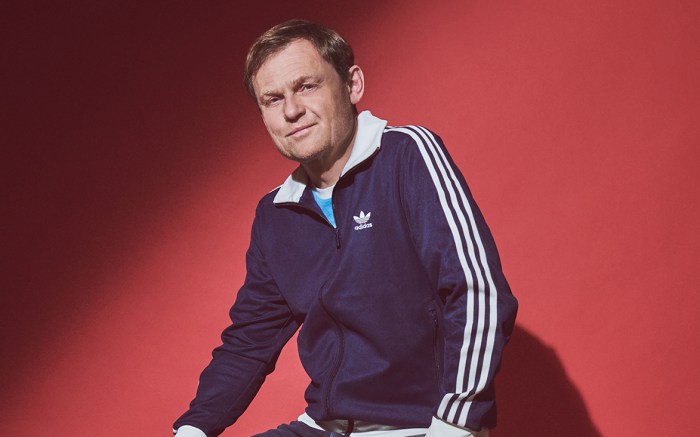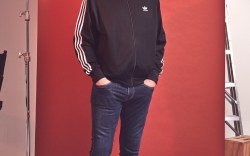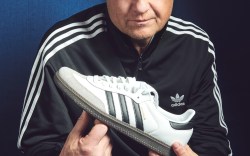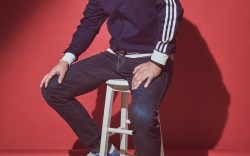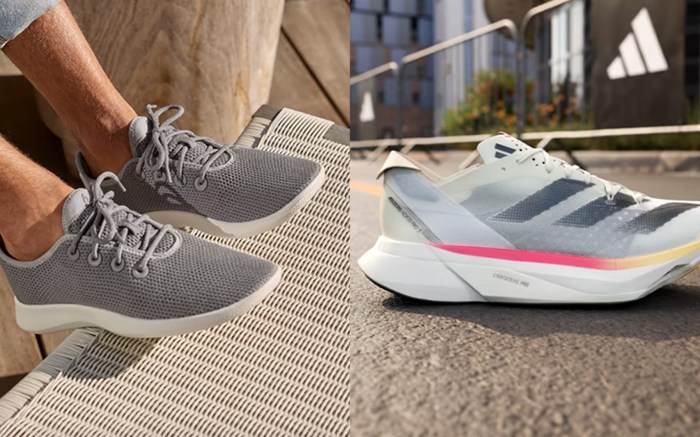Bjørn Gulden is known for his larger-than-life personality, but when it comes to taking photos, the Adidas chief is surprisingly camera-shy.
“Now finished,” Gulden said with a laugh, walking away mid shoot from photographer Andrew Boyle and toward the couches inside FN’s photo studio in New York City wearing a pair of blue-and-yellow SL 72s, a running shoe from 1972 that’s performing well for the brand.
After changing into a black-and-white Adidas track jacket and matching Superstars, Gulden returns to the set for the final shot. His shoe of choice is fitting. Retro sneakers are dominating the industry, and the Superstar, which debuted in 1970, is one of Adidas’ greatest silhouettes ever. It’s also on deck to be the brand’s next big focus in the coming years, according to Gulden.
The executive is keen to speak to FN about the business — tapping his decades of experience to offer insights on the future of the sports brand. Adidas is a company near and dear to Gulden.
Watch on FN
Before he worked in the footwear industry, the executive wore the brand’s shoes on the pitch as a professional soccer player. And after his athletic career, Gulden held roles at Adidas from 1992 to 1999, including senior vice president of apparel and accessories, before spending nine years at rival Puma, where he was credited with making the brand a major footwear player once again.
When he returned to Adidas in January 2023, Gulden inherited a brand in turmoil following the termination of its Yeezy deal. (The move was spurred by repeated antisemitic statements by the brand founder Kanye West in October 2022.) After the deal ended, Adidas weighed a variety of options for what to do with the leftover $1.3 billion worth of Yeezy product.
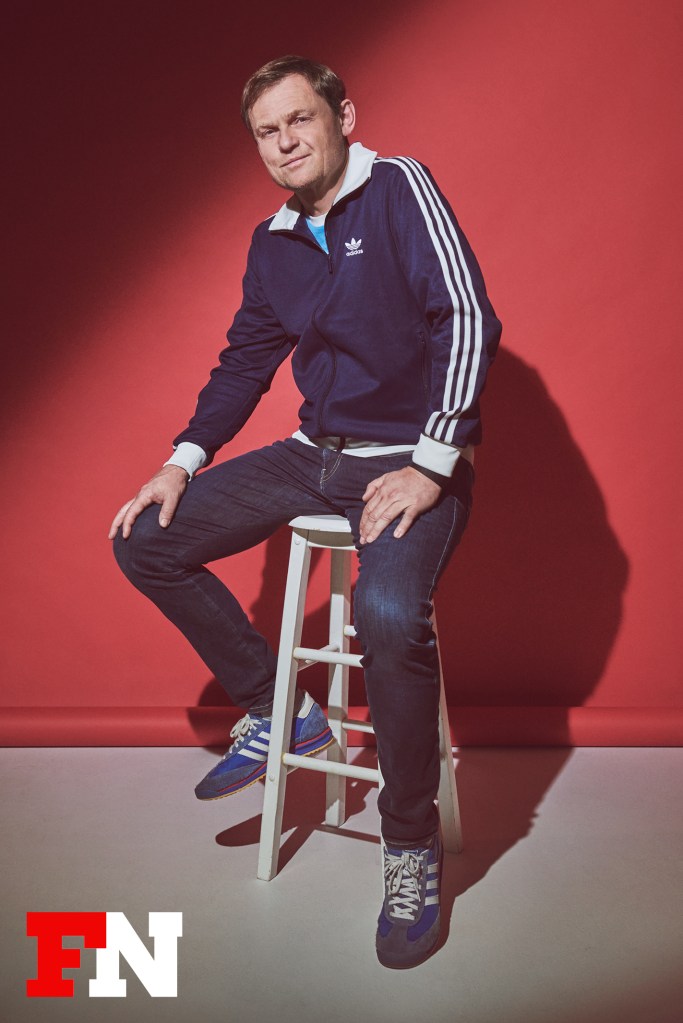
Ultimately, Gulden and his team decided to sell the leftover Yeezy product instead of scrapping it, giving some of the proceeds to charity. In the first quarter of 2024, Adidas made 150 million euros selling leftover Yeezy stock. Now, the company has around 200 million euros worth of it left, but plans to sell it at cost over the next three quarters. And, as they have been every quarter since the 2022 breakup with West, Adidas executives were keen to emphasize their brand is just as strong without Yeezy. “I wasn’t at the company when the [Yeezy] relationship was built,” Gulden said. “But we’re solving the situation I inherited in the best way possible.”
At Adidas’ annual general meeting in May, Gulden explained the state of the company when he walked in the door.
“We started 2023 with lots of negative reports,” Gulden said at May’s meeting. “People said things like ‘there is no innovation’; ‘there are no hot products and there is no brand heat’; ‘there’s no talent.’ It was a difficult start, but I will show you that we do have innovation that existed 12 months ago that had nothing to do with me and was already there.”
The CEO highlighted the Adizero Adios Pro Evo 1, Terrex Agravic Speed Ultra, Predator 24 and AE 1 sneakers as innovative models.
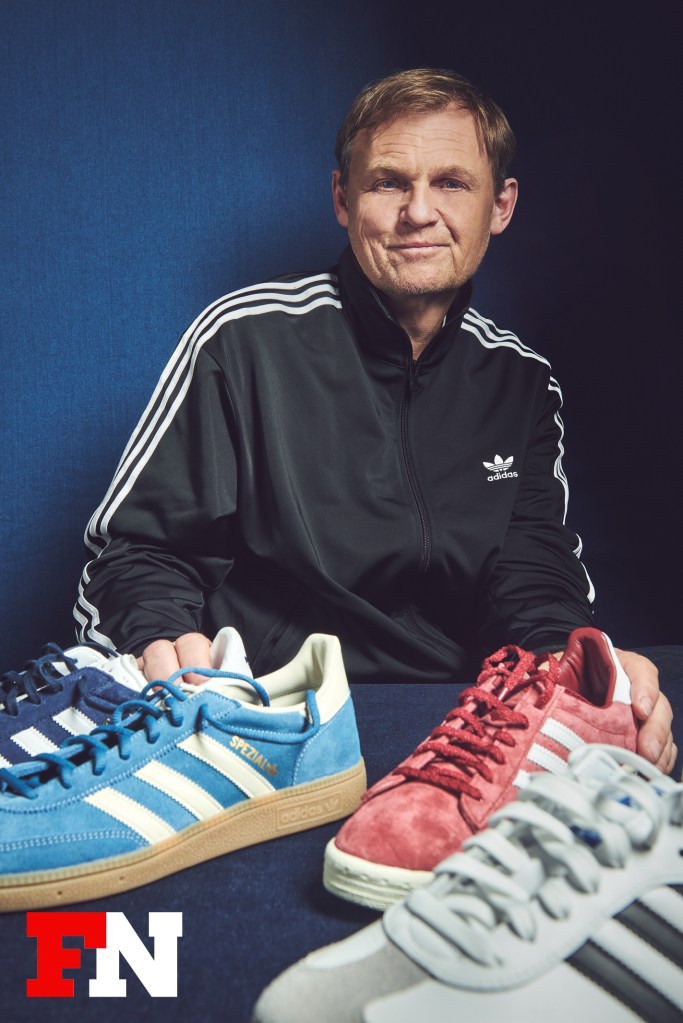
Gulden also signaled to investors that Adidas will continue to push out more affordable versions of some of its most popular shoes. “It’s important to understand that not everyone can buy a shoe for 120 to 150 [euros], but everyone wants to take part in the same trends,” Gulden said.
The brand revealed plans for models priced at 60 to 80 euros. Some of the shoes, such as the Samba-like VL Court, the Campus-adjacent Grand Court and the Stan Smith-leaning Advantage, are already on the market. During spring 2025, Adidas is set to introduce budget-friendly Spezial and Superstar models.
“Adidas excels by being rooted in performance while seamlessly crossing over into lifestyle. It resonates across footwear for men, women and kids, as well as apparel and accessories — a versatility that few brands can claim,” said Snipes chief merchandising officer Dimitrios Lessen, who admitted he’s excited to see how Adidas will further fuel the T-toe trend with its Sambae and Samba XLG silhouettes.
Another key to Adidas’ winning strategy is its fashion collaborations, which have been a cornerstone since the early 2000s, when it first forged its partnerships with Y-3 and Stella McCartney.
Of late, one of the company’s most successful collaborations is with British-Jamaican designer Grace Wales Bonner, who has created buzz in the fashion world through her Samba-focused product drops. “It’s been a positive journey that has evolved with intention,” Bonner said. “The partnership has allowed my work to reach a global audience and has supported the development of my love for footwear design.”
But even as Gulden leads Adidas into a revival, industry insiders warn against repeating some of the company’s past missteps.
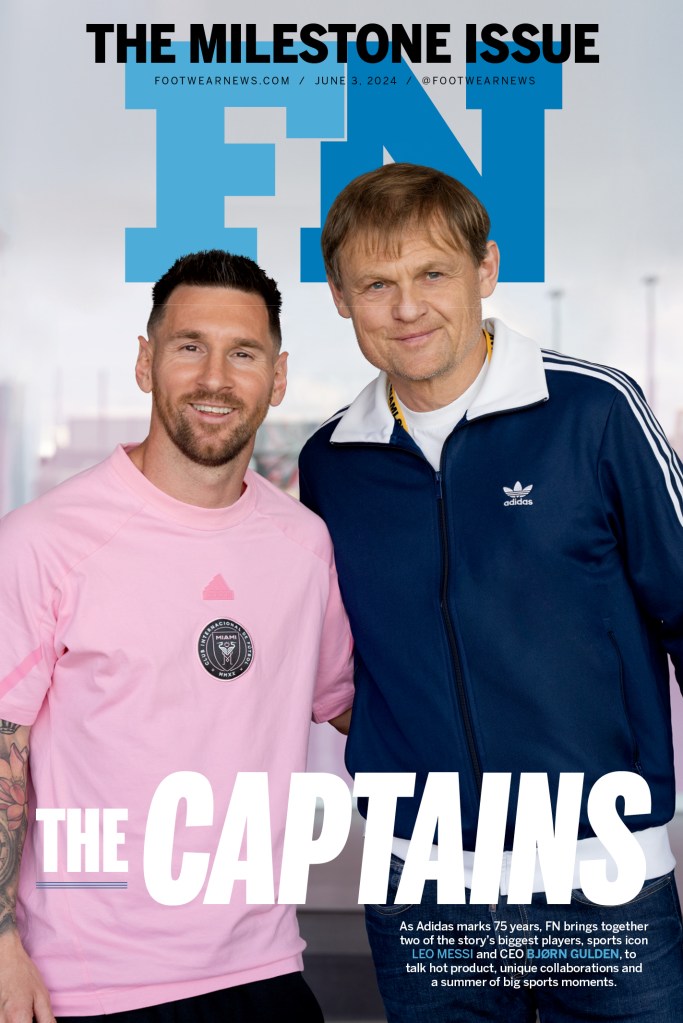
“Historically, the brand has been far too European-centric. They have not focused on making shoes for the U.S. market,” said Matt Powell, an adviser at Spurwink River and senior adviser at BCE Consulting. “When they get a shoe that works here — Superstar, Samba — it’s a big deal, but it’s almost not intentional. It just seems to happen. What I hope to see happen is that Gulden does what he did with Puma and focuses product development on the U.S. market. If they get it right here, it could be a game changer.”
This is especially important given the current weaknesses of Adidas’ biggest rival, Nike, in the U.S.
“Outside of the U.S., Nike and Adidas are relatively in parity in terms of share. In the U.S. is where there’s a big gap,” Powell said. “Conventional wisdom has been it happened because Nike was so good here. I’m starting to come around to the alternate position, which is that Nike has such great share in the U.S. because Adidas was bad here. If Adidas can get it right — and I have confidence that’s what’s going to happen — we can see the landscape change dramatically.”
Here, Gulden gets candid about leadership-style criticisms, avoiding the missteps of Adidas’ competitors and the next steps in the brand’s turnaround.
The conversation has been edited for clarity.
Both you and Adidas have been the subject of endless headlines since you took over, including a viral moment at the 2023 FNAAs calling out Nike. Is all press good press?
“Certain press, especially the German media, seem to try to find something negative to talk about, so I’m always advised to not say too much, but it is difficult for me. Sometimes I say something that turns out to be an issue for somebody. But I like to just speak the way I am; I never screen myself. Sometimes that creates some issues. That one at your event was meant in a more playful way. When you think about Adidas just a year ago, [people said] everything was wrong. No innovation, no brand, no product, everything was bad. And now suddenly, everything that was bad is positive. I think that’s why I can be polarizing in the press because sometimes it’s difficult for people to manage this transition.”
How do you grade the progress so far?
“In front of the consumer, especially with women, we have turned the ship because the Originals and lifestyle part of the business has become very popular. When you look at the Spezial, the Campus and the SL 72, these are the healthy sneakers in many cities already. I didn’t expect that to happen so quickly, but when it happens quickly, it brings a better mood and builds better relationships. We can show our stakeholders fast that this is a great brand and it’s up to us to build it so that the business growth is also sustainable.”
You mentioned in a recent earnings call that North American sales are lagging six to nine months, but a cleaner inventory is helping. What’s needed to get the region back into sales gains?
“We’re proud of the fact that we are down 41 percent in inventory and have been disciplined and cleaned up some old stock in the market. We have also helped many retailers clean up their inventory on merchandise that hasn’t worked, especially in women’s. But this movement is a bit delayed when you compare it to what’s happening in Europe and Asia.
In America, to be a successful business, we need to connect to the men’s market, we need to connect to the urban consumer and we also need to be ‘more American.’ I have said from Day One that the world is not one market where you can have the same recipe. You need to look at what the consumer wants, what influences them. And then you need to build that into your local plan. You do the same in Europe, you do the same in Asia, and the commonality is good. But the difference is also good and more targeted. There’s no doubt that we need to be more American in the U.S. That’s what we’re trying to be. The recipe is easy, but the execution is always difficult. And we are in the middle of it.”
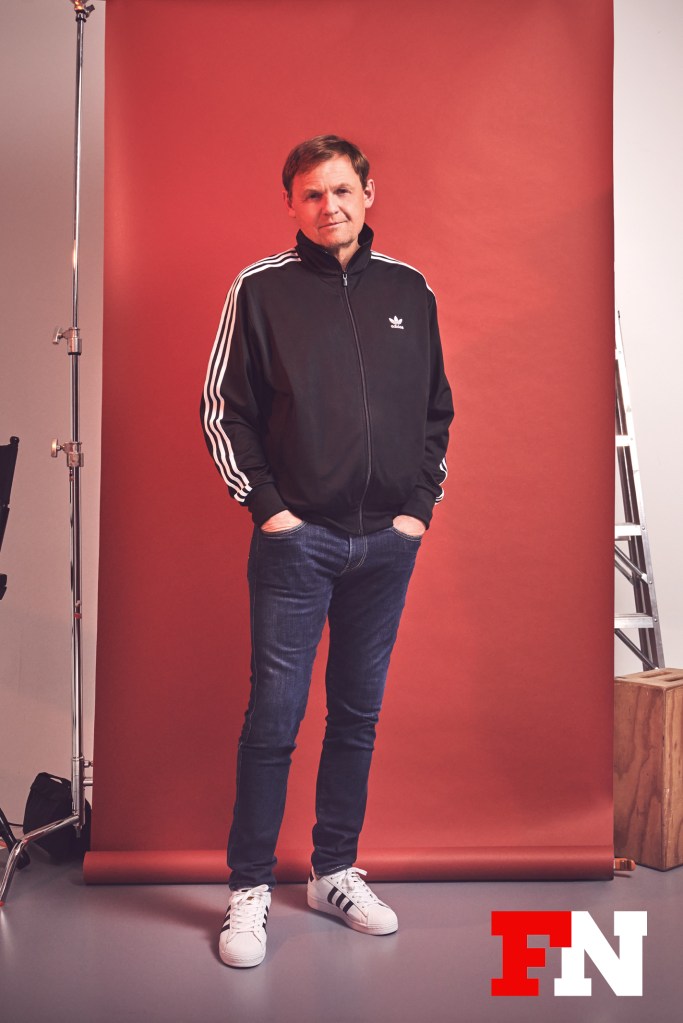
How are you building relationships with your retail partners?
“I really believe that Adidas is back to being one of the brands that retailers must plan with and work with for their buys now that the demand is there for the product. I had the task 14 months ago to make sure that these retailers are invited to the headquarters, that we give them samples, show them the product pipeline and make changes along the way. For me, that’s the natural way of doing business. Adidas had drifted away from that for whatever reason, but now we’re back and trying to be the best partner for the retailers.”
How do fashion-related partnerships, like your one with Wales Bonner, play into the overall shoe strategy?
“[Grace Wales Bonner] impresses me, and from what I hear, any luxury brand would want to work with her. I cannot say a millimeter of negativity about her. But when we approach these franchises, we must be very careful that we manage them in a better way than before. This includes heating them up at the right time and closely watching the social searches and other research techniques we use. A lot of the retailers we work with, especially the online fashion ones, give us feedback on what they’re seeing that’s trending and hopefully we can manage those trends in a timely way.
Right now, we’re focused on the Campus, Spezial and SL 72 sneakers. There is, of course, the Superstar, but we don’t need to push that right now, we can be careful with that rollout. We have some warm-up programs for the Superstar, with the first one being with Edison Chen that was released in January. We have a lot of things ready to go, and we’ve been very disciplined with cleaning up the market.”
You announced a new Champs-Élysées store in Paris slated to open shortly before the Summer Olympics. What opportunities do the Games present to Adidas, and how does this store play into the strategy?
“The Olympics really isn’t a commercial event like the World Cup or Euro, where you’re selling products. So young people from all over the world will come to Paris to compete against each other in, hopefully, a peaceful environment. Everyone wants to be in a party mood surrounding sports again. We have been isolated for a long time and there is a younger generation that hasn’t experienced any of these major events because of the pandemic. But as for our new store, it is a place for us to showcase the brand. And we were very lucky to get a great location at the exact right time that our product lines are heating up.”
There are some people that have called your leadership style “a blast from the past.” Is this accurate?
“The comments you read are coming from ex-Adidas and ex-Puma people. I don’t care. If they’re ex, there’s a reason why they’re ex. And so far, I haven’t lost anybody at Adi that I didn’t want to lose. I’m focusing on the core of the business. We make physical products for physical people. The principles are the same, the only difference is the tools. The retailers I worked with 30 years ago are the same, manufacturers are the same, countries or regions are the same, lead times are the same. I think I’m the right guy for Adidas. [I won’t be] glued to my chair if I feel I’m not the right guy.”
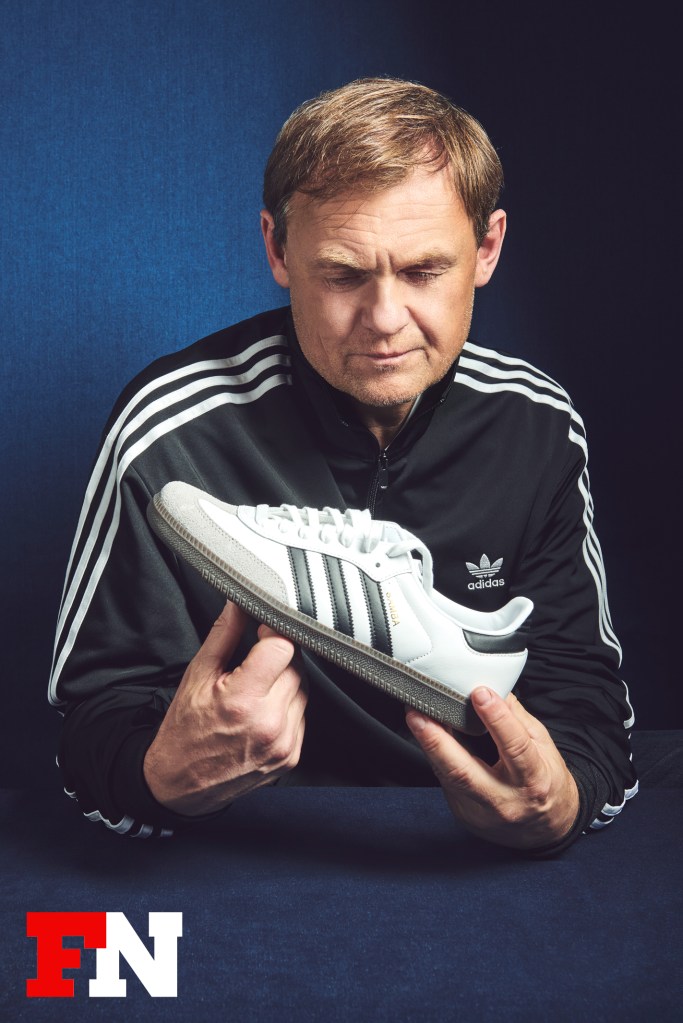
What from your Puma playbook have you applied to Adidas?
“I’m always looking for people who make the team better. And I don’t like secrets. I like everything to be transparent. It doesn’t matter who you are, you have access to what everybody else has access to. Being close to the consumer, more local, being quick when reality is changing — those principles are the same. The difference is the scalability of Adidas when you have something. It’s bigger. I was caught by surprise 14 months ago when everything was negative. Now, in many markets, we have the hottest product. That’s the enormous power of the Three Stripes. At Adidas, for whatever reason, people stopped making decisions. If we have a good shoe, we need to launch it. We had Samba, but didn’t scale it. We had the Evo, the most innovative running shoe in the industry, but we didn’t launch it because we were testing. You could ask the people who were there, but I feel it was a very passive culture. Now, it’s alive. When you win, the mood is better, the campuses are alive, store managers are smiling.”
Nike has been criticized for its lack of innovation. How do you avoid that?
“Innovation [isn’t just] technology. Innovation is also how you rotate your franchises so they are perceived as being new. A year ago, we were criticized for not having running lifestyle, which was innovations like NMD and Ozweego — and the [Yeezy] 350 was drifting away. We briefed the running unit, Originals, Sportswear and said, ‘You can work on new things in running that they haven’t seen before.’ We’ve got six or seven projects out of that [effort] that will go to market. You will be surprised when you see shoes coming in the back end of this year, interesting new silhouettes that the market hasn’t seen before. We also must remember that when you’re bringing something perceived as being new, there’s a risk. Marketing, distribution, price point is also part of innovation. I believe the critique of Nike with innovation is also unfair. Nike has dropped a lot of innovation in the market.”
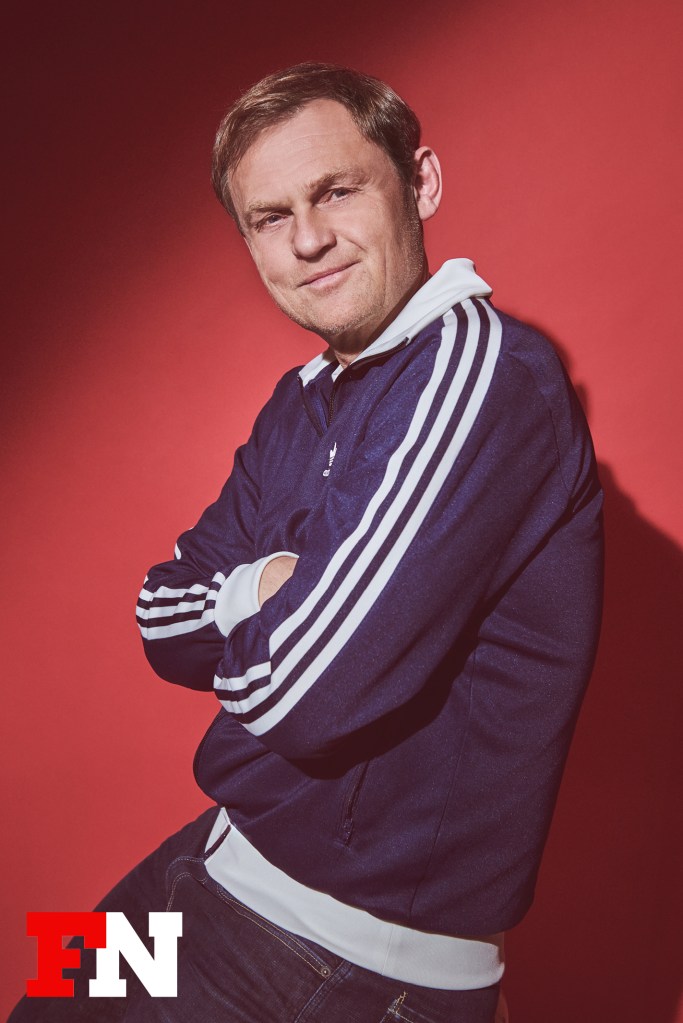
Nike CEO John Donahoe blamed remote work for its innovation problem. Do employees need to be in the office to be effective?
“No. We have built the nicest campuses because people should like to be there, but we shouldn’t force people to be there. I like work from home as a tool to give people flexibility and increase quality of life. But I don’t like the discussion that you should never be in the office, because we are a company that lives out of heat culture and a love for the brand. You cannot create that by only being home. We need people who are happy, motivated and love the brand. I have no problem if [an employee] wants to work from home because they just had a kid or they’re having a difficult time. I also have no problem if people work from home on a Friday or Monday because it gives them a longer weekend. But I’m not a fan of never being in the office. Adidas would not be Adidas if that were the case.”
Adidas was once called out for its lack of racial equity in the workplace. Where does the company stand today?
“If you talk about diversity, you need to look at the whole globe. My philosophy is you should try to have local management and teams mirror the local culture. And we need to make sure that regardless of what you are and where you’re coming from, your background, you can go all the way to the top in our company. Our headquarters in Germany is the most diverse multicultural company in all of Germany, but when you look through the ranks, there’s a time lag between where you want to be and where you are. When I started at Adidas [in the 1990s], it was only Germans and they were men. When you see the diversity now, we are basically 50-50 men and women, and we mirror most markets when it comes to background. Right now, we have Russians and Ukrainians in the office. [Their countries] are at war. We have Palestinian people and we have Israeli people. They are at war. You need to work with both sides, and this is difficult. But because we come from sport, it’s natural for us to bring people together. We have Indians and Pakistanis playing cricket every Tuesday. They’re always in conflict. It’s natural for us to be multicultural, but we are not perfect. And we shouldn’t be so afraid. Every time [diversity] comes up, people freak out. We should just talk about it. We try to have a dialogue with all groups and admit if something is not right, then fix it.”
